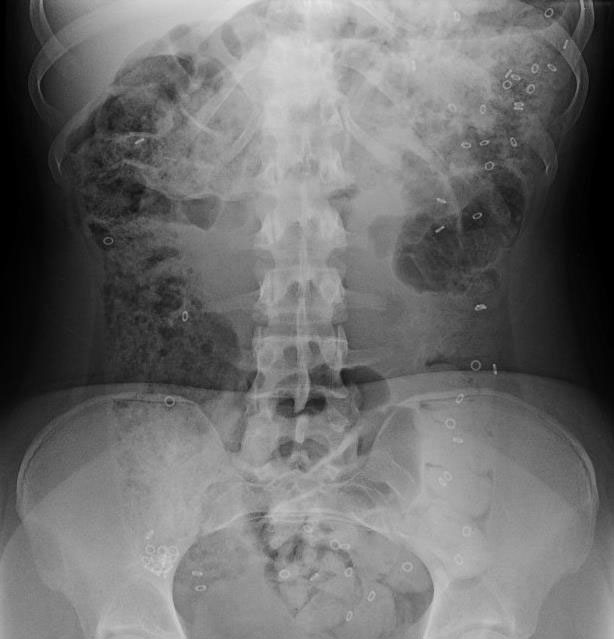This post is also available in:
![]() Español(Spanish)
Español(Spanish)![]() Français(French)
Français(French)
What is a Sitz marker study?
A Sitz marker study is a test for chronic constipation in adults and children at least two years of age. For the study, the patient swallows a capsule containing small markers that can be seen on an X-ray. Then, the patient receives an abdominal X-ray, and the physician measures how many of the markers remain in a part of the large intestine called the colon.
Why might a child need a Sitz marker study?
A Sitz marker study is a helpful way to evaluate chronic constipation. The study can measure how material moves through the colon. Your gastrointestinal (GI) provider will determine if this test is right for your child based on their medical history and physical exam.
How is a Sitz marker study performed?
The first step is for your child to swallow the Sitz marker capsule. If they are unable to swallow the capsule whole, it can be opened and its contents can be sprinkled into a soft food such as applesauce, yogurt, or pudding. The capsule and its contents should not be chewed. Your child must swallow all of the capsule’s contents. This may be done at the healthcare provider’s office or at home, depending on your provider’s preference.
After taking the capsule, your child can resume normal activities, including a normal diet. The capsule will dissolve, and the small markers will move through your child’s GI tract.
Your child will undergo an abdominal X-ray at a specific time after taking the capsule (usually five days later, with “day one” being the day the capsule is swallowed). Your GI provider will review the X-ray to determine if any markers remain in the colon and where they are located. They will use this information to evaluate how contents move through your child’s
GI tract. The provider also will use the information to determine if any further testing is needed.
There is an alternate study procedure that involves taking a capsule for several days in a row. Your GI provider will tell you if they prefer to use that procedure instead.

What happens before the Sitz marker study?
Your GI provider may want your child to do a bowel cleanout before the study. If so, they will provide instructions.
If your child is currently taking stool softeners or laxatives, your provider will tell you if your child should stop these medications before the study or continue taking them.
What happens after the Sitz marker study?
Your GI provider will review the abdominal X-ray to determine if the markers remain in the colon.
- If markers remain in the colon and are scattered throughout the colon, this may indicate that contents move slowly through the intestines (called hypomotility).
- If markers remain in the colon and are clustered in the rectum, this may indicate an obstruction or functional outlet delay.
Your GI provider will discuss the results of your child’s test and further plan of care.
What are the risks of a Sitz marker study?
There is a risk of choking on the Sitz marker capsule. Children should be evaluated to ensure they can swallow the capsule and its contents safely.
Sitz marker capsules should not be given to any patient with known or suspected hypersensitivity to the capsule’s components, including barium sulfate.
In addition, the Sitz marker study may show abnormal results that may need further evaluation.
When should we seek medical advice?
If your child has a sudden change in their health status, please call your provider or go to a local emergency room as soon as possible
References:
Authors: Tracy Spaeth, MSN, APRN, FNP and Kathryn Rowell MSN, APRN, FNP
Editor: Athos Bousvaros, MD
May 2021
This post is also available in:
![]() Español(Spanish)
Español(Spanish)![]() Français(French)
Français(French)






